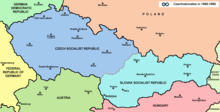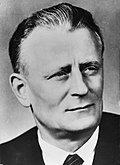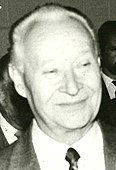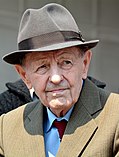
Czechoslovakia was a landlocked state in Central Europe, created in 1918, when it declared its independence from Austria-Hungary. In 1938, after the Munich Agreement, the Sudetenland became part of Nazi Germany, while the country lost further territories to Hungary and Poland. Between 1939 and 1945, the state ceased to exist, as Slovakia proclaimed its independence and Carpathian Ruthenia became part of Hungary, while the German Protectorate of Bohemia and Moravia was proclaimed in the remainder of the Czech Lands. In 1939, after the outbreak of World War II, former Czechoslovak President Edvard Beneš formed a government-in-exile and sought recognition from the Allies.

The Prague Spring was a period of political liberalization and mass protest in the Czechoslovak Socialist Republic. It began on 5 January 1968, when reformist Alexander Dubček was elected First Secretary of the Communist Party of Czechoslovakia (KSČ), and continued until 21 August 1968, when the Soviet Union and most Warsaw Pact members invaded the country to suppress the reforms.
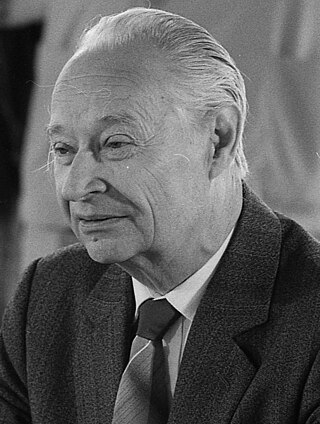
Alexander Dubček was a Slovak statesman who served as the First Secretary of the Presidium of the Central Committee of the Communist Party of Czechoslovakia (KSČ) from January 1968 to April 1969 and as Chairman of the Federal Assembly from 1989 to 1992 following the Velvet Revolution. He oversaw significant reforms to the communist system during a period that became known as the Prague Spring, but his reforms were reversed and he was eventually sidelined following the Warsaw Pact invasion in August 1968.

The Eastern Bloc, also known as the Communist Bloc (Combloc), the Socialist Bloc, and the Soviet Bloc, was the coalition of communist states of Central and Eastern Europe, Asia, Africa, and Latin America that were aligned with the Soviet Union and existed during the Cold War (1947–1991). These states followed the ideology of Marxism–Leninism, in opposition to the capitalist Western Bloc. The Eastern Bloc was often called the "Second World", whereas the term "First World" referred to the Western Bloc and "Third World" referred to the non-aligned countries that were mainly in Africa, Asia, and Latin America but notably also included former pre-1948 Soviet ally Yugoslavia, which was located in Europe.

The Third Czechoslovak Republic, officially the Czechoslovak Republic, was a sovereign state from April 1945 to February 1948 following the end of World War II.
From the Communist coup d'état in February 1948 to the Velvet Revolution in 1989, Czechoslovakia was ruled by the Communist Party of Czechoslovakia. The country belonged to the Eastern Bloc and was a member of the Warsaw Pact and of Comecon. During the era of Communist Party rule, thousands of Czechoslovaks faced political persecution for various offences, such as trying to emigrate across the Iron Curtain.
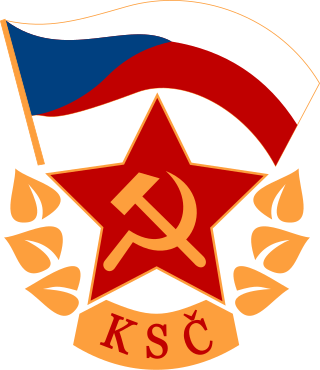
The Communist Party of Czechoslovakia was a communist and Marxist–Leninist political party in Czechoslovakia that existed between 1921 and 1992. It was a member of the Comintern. Between 1929 and 1953, it was led by Klement Gottwald. The KSČ was the sole governing party in the Czechoslovak Socialist Republic though it was a leading party along with the Slovak branch and four other legally permitted non-communist parties. After its election victory in 1946, it seized power in the 1948 Czechoslovak coup d'état and established a one-party state allied with the Soviet Union. Nationalization of virtually all private enterprises followed, and a command economy was implemented.

The National Front was a political coalition created in 1943 serving as united front of political parties for liberation of Czechoslovakia, after 1948 organized solely by the Communist Party of Czechoslovakia. It was the vehicle for control of all political and social activity by the Communist Party of Czechoslovakia (KSČ). It was also known in English as the National Front of Czechs and Slovaks.
Although political control of Communist Czechoslovakia was largely monopolized by the authoritarian Communist Party of Czechoslovakia (KSČ), the party technically shared political power with other parties of the National Front. The leader of the KSČ was de facto the most powerful person in the country during this period. Czechoslovakia's foreign policy was openly influenced by the foreign policy of the Soviet Union.
The mass media in Communist Czechoslovakia was controlled by the Communist Party of Czechoslovakia (KSČ). Private ownership of any publication or agency of the mass media was generally forbidden, although churches and other organizations published small periodicals and newspapers. Even with this informational monopoly in the hands of organizations under KSČ control, all publications were reviewed by the government's Office for Press and Information. Censorship was lifted for three months during the 1968 Prague Spring but afterward was reimposed under the terms of the 1966 Press Law. The law states that the Czechoslovak press is to provide complete information, but it must also advance the interests of socialist society and promote the people's socialist awareness of the policy of the communist party as the leading force in society and state.
With the collapse of the Habsburg monarchy at the end of World War I, the independent country of Czechoslovakia was formed as a result of the critical intervention of U.S. President Woodrow Wilson, among others.

Gustáv Husák was a Czechoslovak politician who served as the long-time First Secretary of the Communist Party of Czechoslovakia from 1969 to 1987 and the President of Czechoslovakia from 1975 to 1989.

A show trial is a public trial in which the guilt or innocence of the defendant has already been determined. The purpose of holding a show trial is to present both accusation and verdict to the public, serving as an example and a warning to other would-be dissidents or transgressors.

Rudolf Slánský was a leading Czech Communist politician. Holding the post of the party's General Secretary after World War II, he was one of the leading creators and organizers of Communist rule in Czechoslovakia.
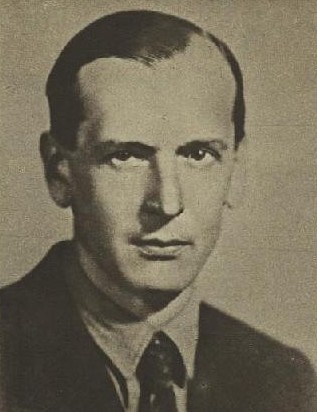
Jan Šverma was a Czech journalist, communist activist and resistance fighter against the Nazi-backed Slovak State. Šverma was considered a national hero in the Czechoslovak Socialist Republic.

In late February 1948, the Communist Party of Czechoslovakia (KSČ), with Soviet backing, assumed undisputed control over the government of Czechoslovakia through a coup d'état. It marked the beginning of four decades of the party's rule in the country.

On 20–21 August 1968, the Czechoslovak Socialist Republic was jointly invaded by four Warsaw Pact countries: the Soviet Union, the Polish People's Republic, the People's Republic of Bulgaria and the Hungarian People's Republic. The invasion stopped Alexander Dubček's Prague Spring liberalisation reforms and strengthened the authoritarian wing of the Communist Party of Czechoslovakia (KSČ).

Czechoslovak resistance to the German occupation of the Protectorate of Bohemia and Moravia during World War II began after the occupation of the rest of Czechoslovakia and the formation of the protectorate on 15 March 1939. German policy deterred acts of resistance and annihilated organizations of resistance. In the early days of the war, the Czech population participated in boycotts of public transport and large-scale demonstrations. Later on, armed communist partisan groups participated in sabotage and skirmishes with German police forces. The most well-known act of resistance was the assassination of Reinhard Heydrich. Resistance culminated in the so-called Prague uprising of May 1945; with Allied armies approaching, about 30,000 Czechs seized weapons. Four days of bloody street fighting ensued before the Soviet Red Army entered the nearly liberated city.

Eastern Bloc politics followed the Red Army's occupation of much of Central and Eastern Europe at the end of World War II and the Soviet Union's installation of Soviet-controlled Marxist–Leninist governments in the region that would be later called the Eastern Bloc through a process of bloc politics and repression. These governments contained apparent elements of representative democracy to conceal the process initially.
Karel Dufek was a Czechoslovak diplomat and a Spanish Civil War veteran who served in the International Brigades.







